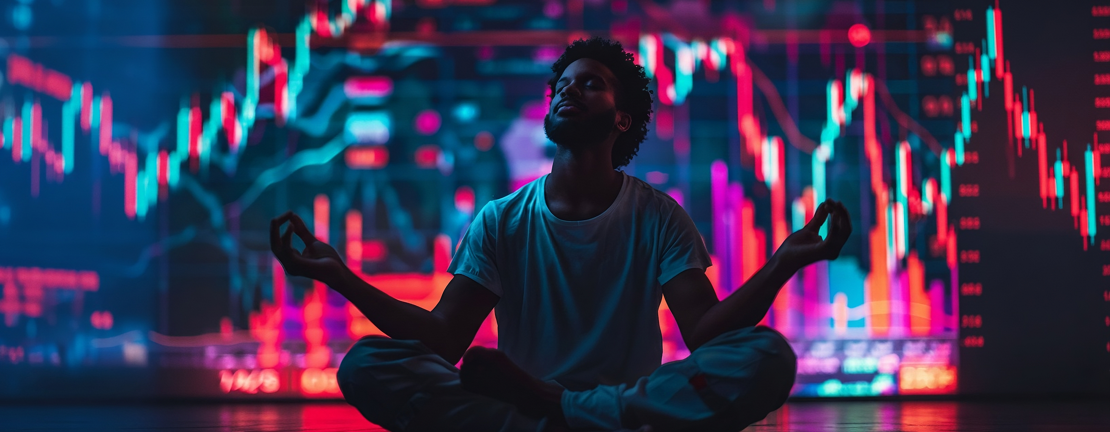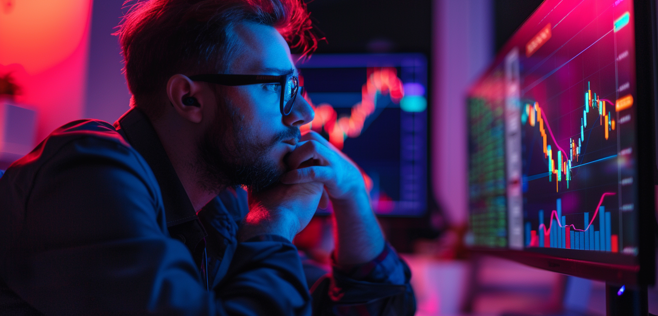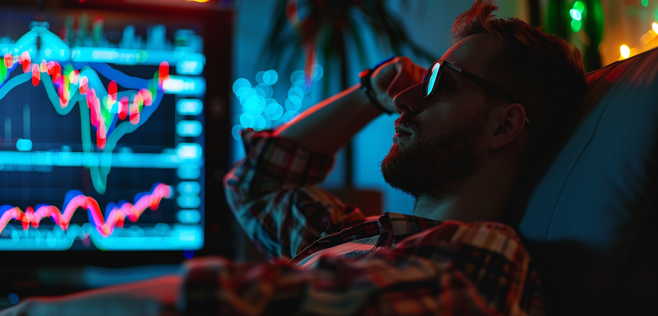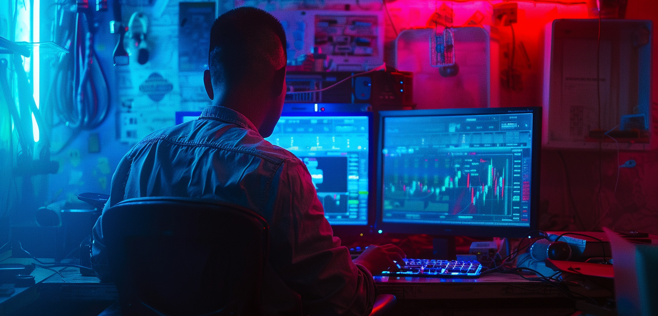Published 06 Oct 2025
How to Master Crypto Trading Psychology with AI: Stop FOMO and Panic Selling

A staggering 90% of retail traders lose money. This reflects the harsh reality of crypto trading psychology without AI assistance.
The crypto market shows remarkable resilience. About 73% of U.S. crypto holders intend to invest more in cryptocurrency by 2025. Fear and greed often lead to impulsive decisions. AI trading algorithms help traders by streamlining processes, increasing speed, and enhancing decision-making. These advanced systems can process millions of data points each second. They help investors understand psychological levels — the crucial price points that shape trader behavior.
Traders can avoid emotional pitfalls by using technology for rational decisions. The numbers tell an encouraging story: 67% of traders who use specialized tools become profitable within six months. Additionally, 59% of successful crypto investors rely on dollar-cost averaging as their main strategy to handle market volatility.
This piece examines how AI tools combined with sound psychological principles can improve trading results. It shows investors how to sidestep common emotional traps and build lasting success in cryptocurrency's volatile market.
Understanding Crypto Trading Psychology
Crypto traders face unique psychological pressures that you rarely see in traditional finance. Every decision in this space stems from trading psychology. Success or failure often depends on how well traders manage their emotions.
What Is Crypto Trading Psychology?
Trading psychology shapes how traders think and act in markets through their emotions, mental state, beliefs, and biases. Crypto markets never sleep, and prices can swing wildly. These factors make emotional control even more crucial. The main components include:
- Emotional awareness: Understanding how feelings drive decisions
- Discipline: Sticking to trading plans no matter what markets do
- Risk management: Protecting your money with smart strategies
- Mindset: Building mental toughness and flexibility
Studies show crypto traders often behave like addicts. Many keep trading compulsively even as losses pile up. This behavior creates a cycle where quick profits become more important than smart strategies.
Why Emotions Like Fear and Greed Dominate Crypto Markets
Raw emotion drives crypto market behavior. Prices go up, and people get greedy (FOMO kicks in). Prices drop, and panic sets in, leading to irrational selling.
The Fear and Greed Index measures these market mood swings. The theory suggests extreme fear might signal good buying chances, while too much greed could warn of upcoming drops.
Research in behavioral economics proves that emotions shape both investment choices and asset prices. Crypto markets feel this impact more because they lack big institutional investors that help steady traditional markets.
Social media platforms like X (Twitter), Reddit, and YouTube pump up the hype and push people toward group thinking. This social pressure leads to more emotional decisions than traditional investing ever did.
The Role of Volatility in Triggering Emotional Decisions
Price swings act as emotional triggers in crypto. Big moves that would shock traditional markets happen all the time in crypto. These wild swings put massive psychological pressure on traders.
Research links market volatility to higher levels of trader anxiety and depression. These feelings get worse during market drops, as fear of losing money leads to panic selling.
Studies also show crypto prices affect volatility differently than traditional markets. Traders react more strongly to the actual price number rather than percentage changes. This "small price bias" changes how people respond to market moves.
Crypto markets never close, and their boom-bust cycles hit harder than stock markets. These conditions create special mental challenges. Traders need solid emotional control to succeed in this environment.

Common Emotional Traps in Crypto Trading
Emotional biases can disrupt even the most technically sound trading strategies. Research shows that 63% of U.S. crypto holders admit their emotional decisions hurt their portfolios.
FOMO: Fear of Missing Out on Gains
FOMO happens when traders make irrational decisions to buy crypto assets without checking their information sources properly. This powerful emotion pushes investors to buy at inflated prices. They are driven by:
- Anxiety about missing life-changing opportunities
- Social media buzz that creates false urgency
- Viral cryptocurrency success stories
Studies reveal 84% of crypto holders have acted on FOMO during price surges, and 58% say FOMO affects them often. This behavior typically results in buying at market peaks right before corrections and immediate losses follow.
Panic selling describes how traders dump their assets in masses because of fear and uncertainty. Traders hastily sell their holdings during market downturns to stop further losses.
Research shows panic selling and short-term price crashes are closely associated, made worse by behavioral biases.
Social media analysis reveals negative sentiment comes before trading volume spikes. Negative tweets surge hours before major price drops. Panic selling events can cause price drops between 5% and 18% within 24 hours. Trading volumes jump 30% to 120% during these events.
Overconfidence After a Winning Streak
Overconfident investors buy cryptocurrency four times more than underconfident investors. This bias shows up after successful trades. It creates a false sense of invincibility that results in:
- Taking excessive risks and overusing leverage
- Ignoring sound risk management principles
- Setting unrealistic future performance goals
Loss Aversion and Holding Onto Bad Trades
Loss aversion means traders feel losses more deeply than similar-sized gains. This often makes them keep declining assets longer than they should. Studies show loss aversion helps speculative bubbles last longer. Investors refuse to accept losses even when fundamentals point to further decline.
Research shows investors react more strongly to "small price bias" in crypto markets compared to traditional ones. They respond differently to price movements based on absolute price instead of percentage changes.

How AI Helps You Trade Smarter
AI reshapes the scene of crypto trading by removing psychological barriers that hold back investors. AI systems have a vital advantage in volatile markets because they work without emotional interference, unlike human traders.
Using AI Trading Algorithms to Reduce Emotional Bias
AI algorithms remove fear and greed that lead to poor choices. These systems use consistent methods based on objective analysis for every market scenario. AI adds a rational approach to trading environments where emotional decisions often cause losses.
AI Tools for Immediate Sentiment Analysis
Today's AI platforms process social media posts, news stories, and financial reports at the same time. These tools use natural language processing to find keywords that show market sentiment and give traders useful information without emotional bias. To name just one example, Crypto.com uses Amazon Bedrock to analyze sentiment in less than a second.
Automated Trading Bots for Consistent Execution
Trading bots run strategies based on set rules and work around the clock without getting tired. They make trading more efficient by cutting down human error and responding quickly to market signals. Popular platforms like Cryptohopper, 3Commas, and Pionex come with features from user-friendly designs to advanced customization.
Crypto Psychology Charting With AI Insights
AI systems spot subtle links between market psychology and price changes that humans might need weeks to notice. Traders can use this information to predict psychological market triggers and avoid emotional traps through predictive analysis.
Building Long-Term Discipline With AI
Success in crypto trading goes beyond AI tools. You need structured discipline that can weather market storms. A systematic approach backed by technology helps traders avoid impulse decisions that often result in losses.
Creating a Trading Plan and Sticking to It
A complete trading plan serves as the bedrock of disciplined execution. Your plan should spell out clear entry and exit strategies. This eliminates any confusion that might push you toward emotional decisions. AI trading algorithms help you stick to trading plans. They apply preset rules without fail — they buy when trends start, sell at stop-loss points, and adjust positions based on market signals.
Using AI to Track and Reflect on Your Behavior
Modern automated journaling tools give you a unique look into trading psychology patterns:
- These systems link directly to trading accounts and analyze positions, timing, and outcomes
- Advanced AI spots specific emotional triggers as they happen instead of giving generic advice
- Traders get alerts when their behavior shows signs of greed or fear affecting their choices
Combining AI Data With Human Intuition
The best results come from balancing AI's analytical power with human judgment. AI shines at crunching data and finding patterns. Human traders add context understanding and critical thinking. This teamwork improves decision-making. Traders use their gut feeling to spot potential AI biases while looking at quality factors that algorithms might skip.
Avoiding Overreliance on Automation
All the same, traders should watch out for depending too much on AI systems. You should set proper stop-losses for automated strategies. AI bots can fail badly during unexpected market events. It also helps to watch the "equity curve". If a system loses more than backtesting suggested, stop and review. Successful traders ended up using AI as a tool rather than giving up control completely.

Conclusion
Trading psychology is crucial to succeed in cryptocurrency markets. Emotions like fear and greed can push traders off course and cause them to lose money. AI technology now gives us powerful ways to solve these classic trading problems.
AI tools substantially cut down emotional bias through objective analysis and consistent strategy execution. Traders can now use evidence-based decisions instead of falling for FOMO during bull runs or panic selling in downturns. On top of that, AI sentiment tools process information that's so big it would overwhelm any human trader. These tools spot market trends early, before they become obvious to everyone else.
The best strategy combines AI capabilities with human wisdom. AI excels at spotting patterns and processing data, while traders bring context and critical thinking to the table. This partnership lets traders use their gut instinct without falling into common psychological traps.
Discipline is key, whatever tools you use. A solid trading plan helps you stay steady through market ups and downs. AI tools back up this discipline by watching your behavior patterns and warning you when emotions might be affecting your choices.
Successful crypto trading needs both mental strength and tech smarts. Traders who control their emotions and use AI tools are part of the small group that makes steady profits. The gap between winning and losing traders usually isn't about technical knowledge — it's about their mental approach to the market.
Read More




 Get RateX Pro
Get RateX Pro

 06 Jun 2024
06 Jun 2024
